After Nature
2020 - ONGOING | BOTANICAL ILLUSTRATIONS DIGITALLY MANIPULATED WITH A PIXEL-SORTING ALGORITHM | FINE ART PRINT ON HAANEMüLE GERMAN ETCHING 310gms PAPER | VARIABLE DIMENSIONES
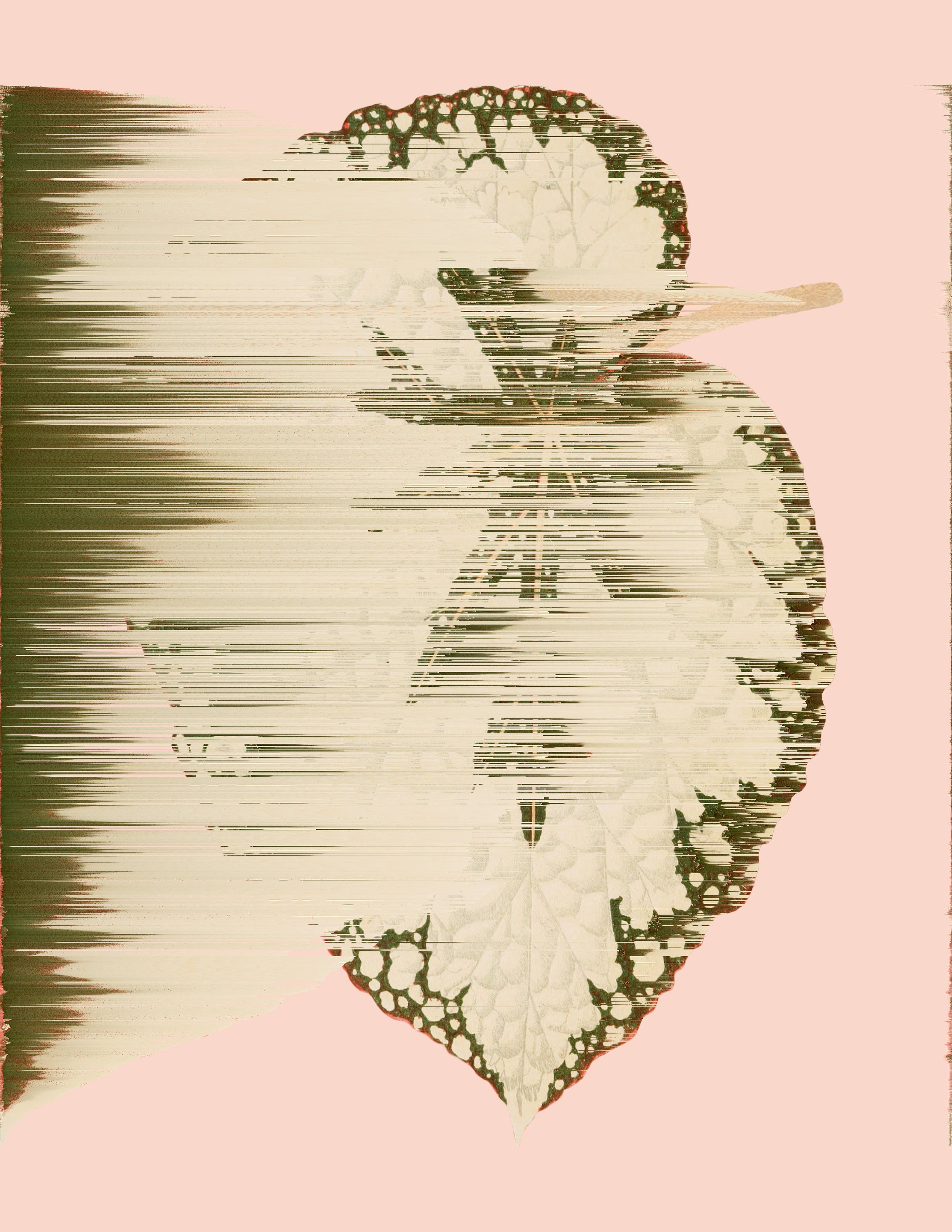


“IT IS NECESSARY TO FOLLOW THE FLOWERS FROM BEFORE THEIR OPENING UNTIL THE FULL MATURITY OF THE FRUIT, AND IT IS IN THIS SUCCESSION THAT ONE SEES THE METAMORPHOSES AND A CHAIN OF MARVELS WHICH HOLD EVERY HEALTHY MIND WHO OBSERVES THEM IN A CONTINUAL ADMIRATION. ”
— Jean Jacques Rousseau
The French philosopher Jean Jacques Rousseau wrote in his Elementary Letters on Botany: "It is necessary to follow the flowers from before their opening until the full maturity of the fruit, and it is in this succession that one sees the metamorphoses and a chain of marvels which hold every healthy mind who observes them in a continual admiration." The contemplation of another metamorphosis, produced by pixels and the algorithmic manipulation of images, is part of Andrea Wolf’s proposal in After Nature. These procedures offer a different way to admire plants and flowers, but also to comprehend the artificiality produced by light, so that at a certain point, the medium can imitate natural processes such as photosynthesis.
In the images produced in this work, a growing flower stretching towards the light, is combined with flowers or plants that grow indistinctly, generating another texture between light, color and digital medium, without completely removing the initial image. There is a continuous-discontinuous quality in the images in After Nature, where each illustration or plant reacts organically in a different way to the artificialprocedure to which it is subjected. Specifically, Andrea Wolf points out:
“A system is generated in which the elements of the image are continuously regenerated, leading to new compositions in a dynamic glitch. It is an autopoietic system that produces its own components through its interactions and transformations, continuously carrying out and regenerating the network of processes that have produced them.”
:: Sphaeralcea Munroana, var. 13, 2020 :: Botanical illustration digitally manipulated with pixel a sorting algorithm • Fine Art Print on Hahnemüle German Etching 310gms. paper • 120 x 93 cm. and 80 x 62 cm.
Andrea explains: “This series of works considers what is artificial and unstable in images, influenced by an aestheticized idea of nature, both as something outside of ourselves (the wild), and as something that we can control, classify and possess. By directing our gaze to the intersection of digital media and ecological literacy, this work explores how these technologies mediate the creation and circulation of images that inform our way of seeing and understanding nature.”
Light on a leaf illuminates its internal nervation, showing us its natural architecture. This construction accounts for the traces of an internal body that is discovered by the gaze. This is how I consider, for example, the Caladium, Begonia and Calathea series, where the light seems to settle indistinctly on the parts of a leaf, but we know it is not so, but rather the device (manipulated by the artist) that mediated in this experiment, resulting in a light that, however, is not imagined. This use of light acts as a tool for the organic function of light on the plant: in its absence, the plant sleeps.
Another effect that this work produces is our impression of being able to look in slow or fast motion at the natural ability of a plant to rhythmically compose its parts: roots, fruits and flowers fixed on the image. Thus, this work gives us a unique and stationary temporary snapshot. By evoking nature, in spite of the changes in these illustrations, it continues to be an aesthetic mediation, inducing an effect similar to that of the observation of botanical illustrations, herbaria and travel diaries, popular recording objects among explorers and naturalists of the 19th century.
This system also refers to poiesis, the original idea of creation, a movement and analogy itself of photosynthesis, the natural process of a plant when it metabolizes sunlight, water and the environment. Here, the light/pixel is added to the process, together with the algorithmic manipulation carried out by the artist, who recreates, reproduces, prints, re-draws and illuminates, composing a re-appropriation beyond the reproduction of botanical illustration plates, since the various mechanisms to which these plates are subject to give a new life to the colors and new movements to the dimension of light in each section of the plant or flower.
Gastón Bachelard, in The Flame of a Candle, says: "From all our searching we will only preserve bursts of images." I refer to this idea because although the search for these images originates in certain old botanical illustrations that have been digitized and can be found online, in the end product we see the plant or vegetable turned into pixels, colored lights on a screen, which are then transferred into print, which can restore a certain texture to the image. I also think it recovers something of the initial and natural (but not original) condition of the naturalist painters and the studious (but also experimental) desire to fix that plant-flower-seed-pistil-seedling by studying its outline and sketching it by means of the eye and the pencil. This mediation takes place in the displacement of the image’s pixels, rearranged according to their brightness (Wolf), a technique that, despite its temporal distance, gives us back something of the original condition and experimentation, similar to that of the botanist illustrator or plant and herb collector (a practice that has engaged philosophers and poets, as well as artists).
:: Begonia Obliqua, var. 23, 2020 :: Botanical illustration digitally manipulated with a pixel sorting algorithm • Fine Art Print on Hahnemüle German Etching 310gms. paper • 82 x 65 cm. and 42 x 32.5 cm.
In sum, I would like to conceive and read this work as that of a naturalist behind a screen, someone observing and manipulating, but instead of using a microscope, she uses a search engine, instead of a notebook,she selects fragments and undertakes a classification process together with a deep observation of other components of each plant and each image transformed before our eyes, almost getting ready for some kind of flight.
In the so-called Anthropocene epoch, I believe that this group of plants and flowers, which we could call an anthology, whose etymology (anthologia) is precisely a selection of flowers, enables us to reconsider the relationship of humans with what is out there, nature, and return to that unity that is also a microcosm, a proposal to co-exist with the various dimensions and images of nature after what is considered natural.
Macarena Urzúa, academic and poet.

:: Heliconia Psittacorum, var. 18, 2020 :: Botanical illustration digitally manipulated with a pixel sorting algorithm • Fine Art Print on Hahnemüle German Etching 310gms. paper • 120 x 93 cm. and 80 x 62 cm.
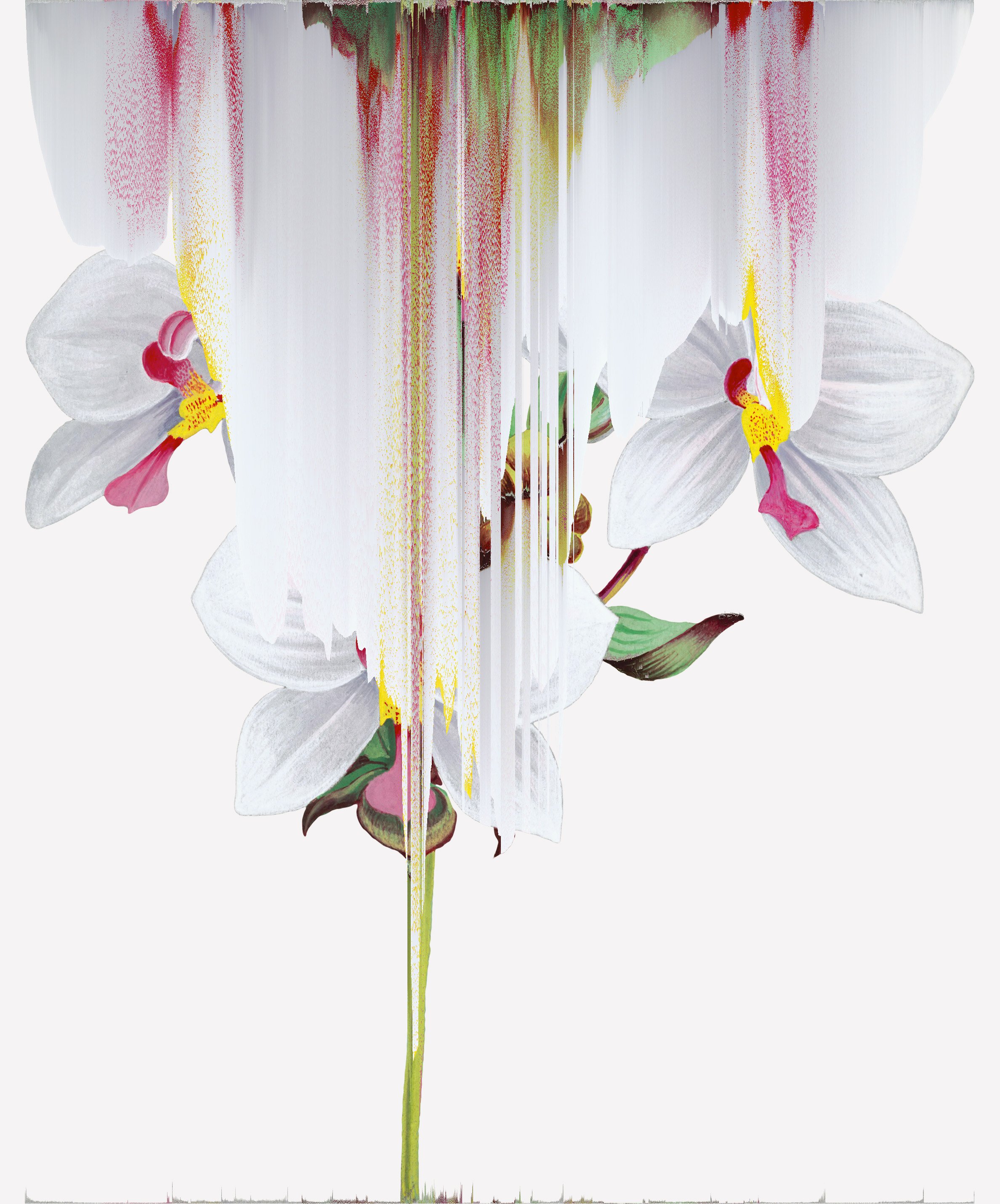
:: Agrostophyllum Philippinense, var. 21, 2020 :: Botanical illustration digitally manipulated with a pixel-sorting algorithm • Fine Art print on Hahnemüle German Etching 310 gr paper • 80 x 66.5 cm and 18 x 14 cm.
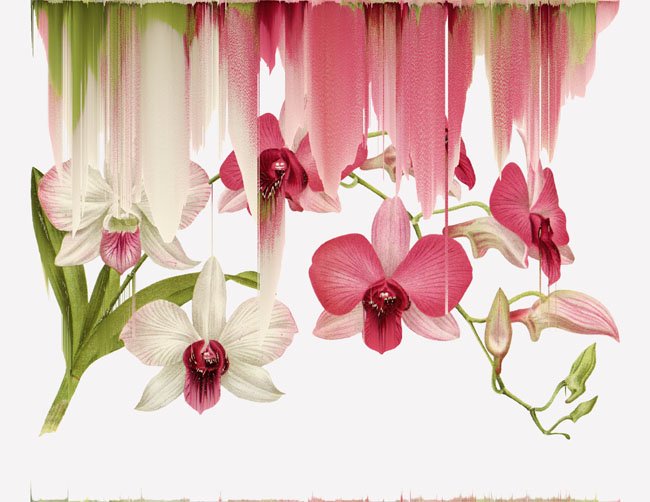
:: Dendrobium Bigibbum, var. 33, 2020 :: Botanical illustration digitally manipulated with a pixel sorting algorithm • Fine Art Print on Hahnemüle German Etching 310gms. paper • 62 x 80 cm.

:: Begonia Rex-Cultorum Diptych variations 42, 18 2020 :: Botanical illustration digitally manipulated with a pixel sorting algorithm • Fine Art Print on Hahnemüle German Etching 310gms. paper • 80 x 133 cm.

:: Begonia Rex-Cultorum Diptych variations 42, 18 2020 :: Botanical illustration digitally manipulated with a pixel sorting algorithm • Fine Art Print on Hahnemüle German Etching 310gms. paper • 80 x 133 cm.
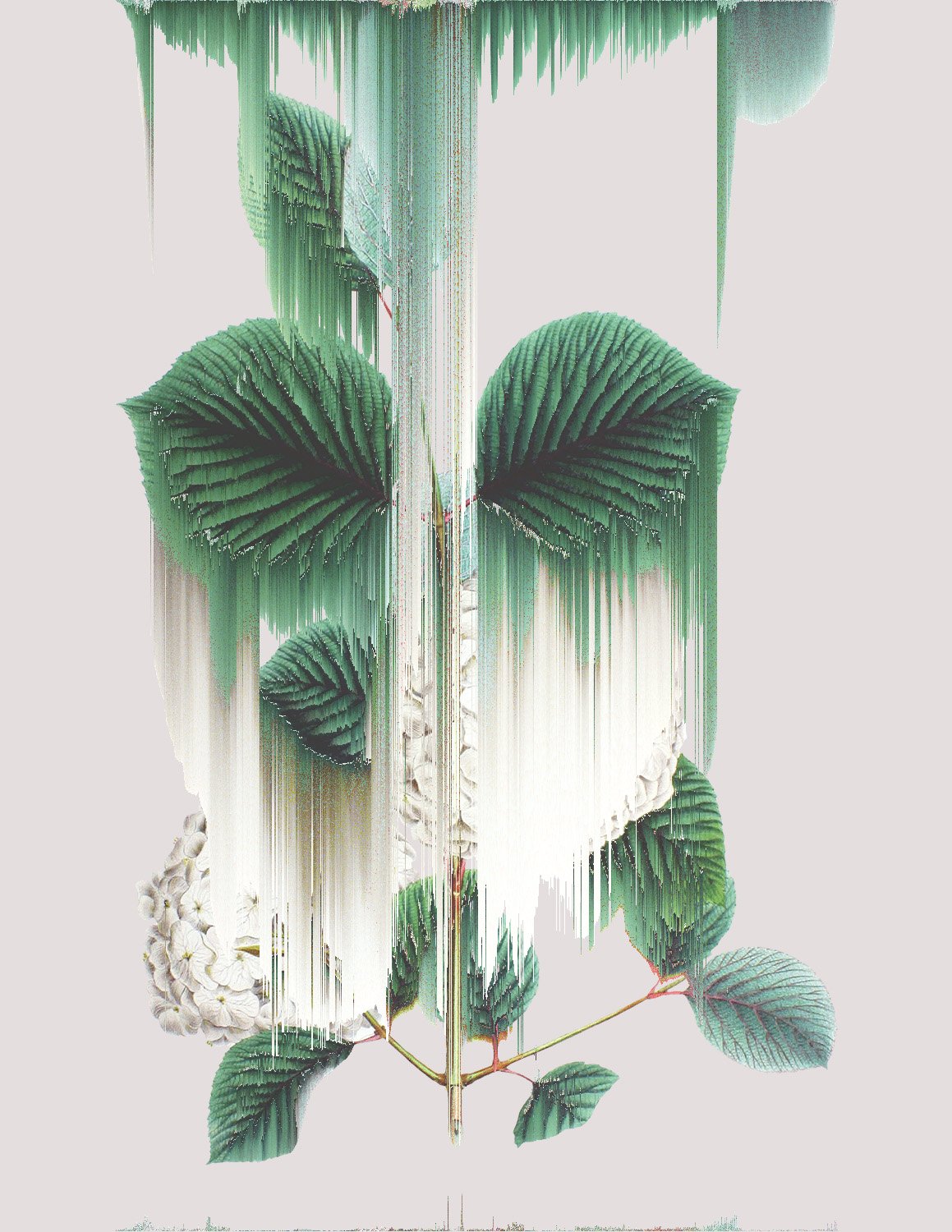
:: Viburnum Plicatum, var. 22, 2020 :: Botanical illustration digitally manipulated with a pixel sorting algorithm • Fine Art Print on Hahnemüle German Etching 310gms. paper • 32 x 24 cm
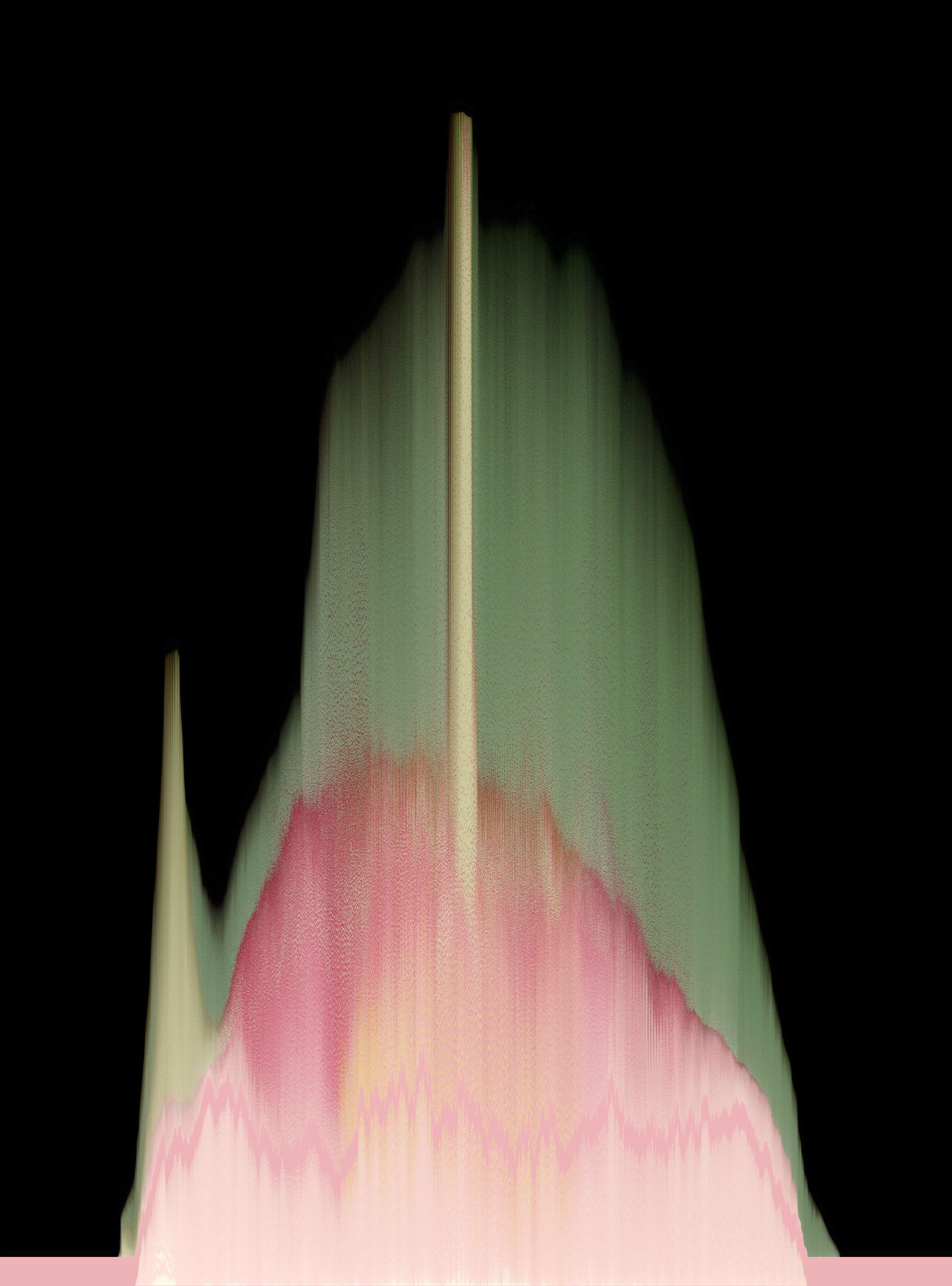
:: Paeonia Suffruticosa, var. 184, 2020 :: Botanical illustration digitally manipulated with a pixel sorting algorithm • Fine Art Print on Hahnemüle German Etching 310gms. paper • 120 x 89 cm. and 70 x 52 cm.

:: Opuntia Basilaris Poliptic var. 44, 2020 :: Botanical illustration digitally manipulated with a pixel sorting algorithm • Fine Art Print on Hahnemüle German Etching 310gms. paper • 31 x 25 cm

:: Opuntia Basilaris Poliptic var. 89, 2020 :: Botanical illustration digitally manipulated with a pixel sorting algorithm • Fine Art Print on Hahnemüle German Etching 310gms. paper • 31 x 25 cm

:: Leaf Study, Calathea Regalis, var. 20, 2020 :: Botanical illustration digitally manipulated with a pixel sorting algorithm • Fine Art Print on Hahnemüle German Etching 310gms. paper • 42 x 25 cm. and 28 x 21.5 cm.

:: Leaf Study, Calathea Regalis, var. 36, 2020 :: Botanical illustration digitally manipulated with a pixel sorting algorithm • Fine Art Print on Hahnemüle German Etching 310gms. paper • 42 x 25 cm. and 28 x 21.5 cm.

:: Leaf Study, Codiaeum Variegatum, var. 34, 2020 :: Botanical illustration digitally manipulated with a pixel sorting algorithm • Fine Art Print on Hahnemüle German Etching 310gms. paper • 42 x 25 cm. and 28 x 21.5 cm.

